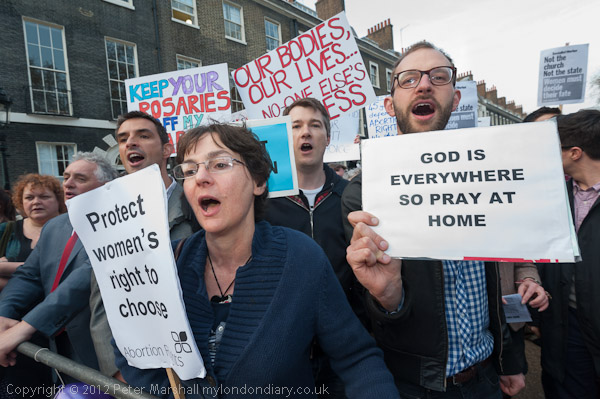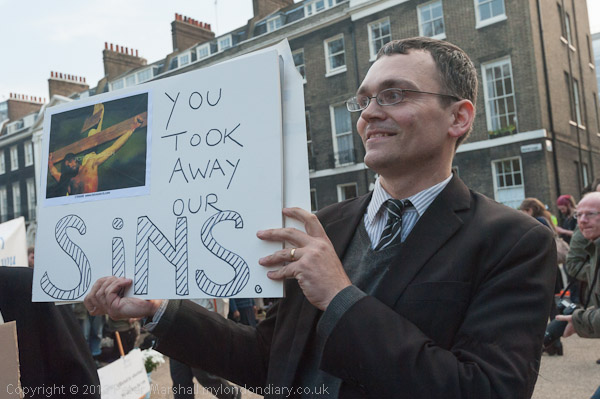The Wire has some useful advice for photographers by Cleland Thom arising from a complaint brought to the Press Complaints Commission over a case involving a guy smoking a hookah in a Glasgow café.
Of course the PCC isn’t exactly everyone’s favourite at the moment, and its rulings aren’t law, although they often reflect their view of the current UK law. Of course this differs in various countries, and in Glasgow it is in any case Scottish rather than English law that would apply. But even so it it probably pretty good advice for keeping out of trouble, though perhaps a little over-restrictive.
The case was dismissed, though with some criticism that the photographer had perhaps misled the complainant over a technicality.
The advice says that a small café or restaurant is a private place, where a person would have a reasonable expectation of privacy, whereas I think in the only similar case I can remember a judge decided it on the basis that someone at the back of a café could reasonably expect this, while had they sat in a prominent position they would have had no such expectation.
Further the advice suggests that the photographer should identify himself, the publication that he/she is working for and the particular use that will be made of the picture. There are problems here for the freelance and I think that usually a rather less detailed and more inclusive statement will have to do. But obviously as Thom says, if the subject places restrictions on how a photograph may be taken or used – such at not showing his or her face – then the photographer should respect these and see that they are passed on with the image. (This paragraph also relates to the fifth point about re-use of the image.)
Probably the least clear of Thom’s five points is:
It is OK to includes images of bystanders in the background, provided they are unlikely to object. If consent is not given, then do not take the photo, unless the photographer is already aware of a clear public interest issue.
The second sentence here seems to contradict the first, suggesting that consent is necessary, while the first leaves it to the photographer to decide whether or not they would be likely to object. It would seem to me that if they are easily recognisable in an image they are not ‘bystanders’ but a part of the subject and should receive the same consideration as the main subject. If they are not readily recognisable then there is no problem in including them.
Fortunately most of my images are taken in public or quasi-public places where no one has any expectation of privacy, so I don’t need to worry about consent. Though I still do get occasionally get people who come and tell me “You can’t take my photograph” or “You should ask before you photograph me” and demand that I delete the pictures.

Pro-choice protesters against ’40 Days for Life’ pickets at BPAS clinic
This happened again when I was photographing a protest last Sunday (not the one shown above), and I tried to point out to the person concerned that the point of public protest was to try to get publicity for a particular cause, and that taking part in such a public event she had implied her permission to be photographed. Not of course that I needed any such consent. (And of course as a photographer I’m pleased when people at such events decide to wear masks if they wish to hide their identity as it usually makes for more interesting images.)

An anti-abortion campaigner supporting the 40 Days For Life pickets outside BPAS clinic. Later in the event he was attempting to hide from photographers behind this poster and at a previous protest he told me I could not photograph him or use his picture. Of course I could and did.
In the UK at least you do not in general need permission to photograph anyone or anything in public places, although many places which we think of as public are actually private. In general there are no restrictions on photographing people without their consent, and the publication of the images is only restricted by the possibility of defamation. (There is also the possibility of public order offences related to images of an indecent nature, and some restrictions on photography of police, security services, military establishments etc, but these are special cases.)
There are often times when I do ask people if I may take a picture, usually when it involves getting very close to them, invading what we think of as our personal space, or when I want their cooperation in some way. It’s generally more a matter of politeness than anything else. But I hadn’t even noticed this person when I was taking pictures – she was just one person among around 20 in one of them. And of course I didn’t delete the image.
More pictures from Stop Harassment At Abortion Clinic protest on My London Diary.
________________________________________________________
My London Diary : Buildings of London : River Lea/Lee Valley : London’s Industrial Heritage
All photographs on this and my other sites, unless otherwise stated are by Peter Marshall and are available for reproduction or can be bought as prints.
To order prints or reproduce images
________________________________________________________